The more you learn about coffee the more you find out that the answer to any grind size question is always, it depends.
The grind size you choose for your French Press is dictated by the length of time you want to brew your Java for. This is because as you grind coffee beans finer, you’re effectively more surface area on your coffee, which makes the Java infuse into the hot water faster.
The short answer is, grind it coarse. Similar to sea salt with grounds between 3.2 mm to 2.4 mm in diameter. A coarse grind in a french press brewed for 4 minutes will give you a great cup of coffee.
We also have a coffee grind size chart on our Cheat Sheet which you can download by signing up for Moka Pot Mondays our coffee newsletter below.
I know of 3 different brewing methods for hot coffee in a French press so I’ll talk a bit about each one and which grind is needed for each one
But if you want to get a little technical then read on and discover the 3 main methods you can use to make coffee in a french press.
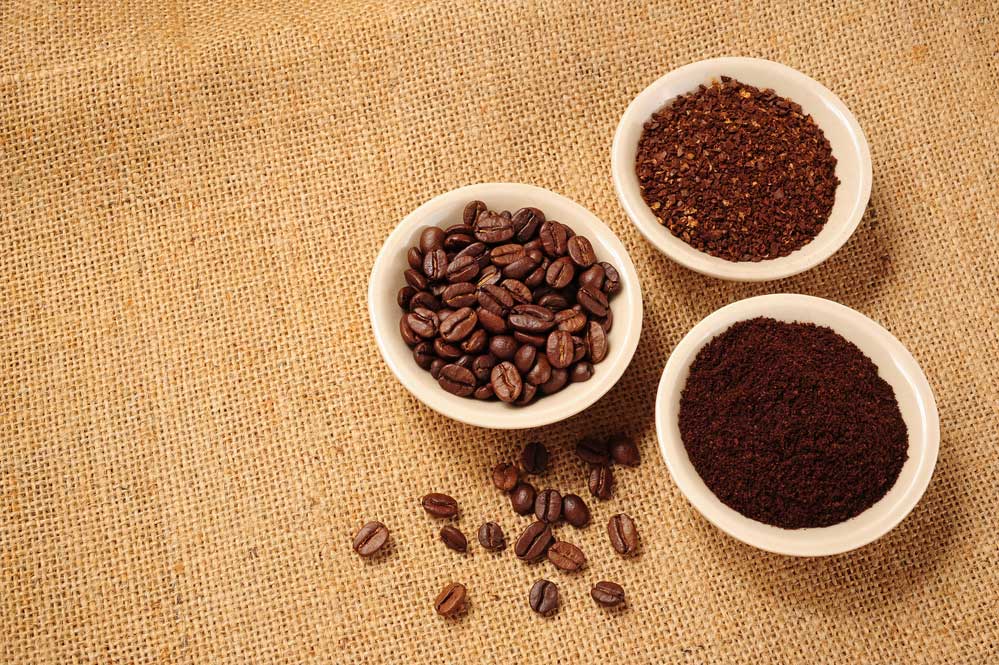
How To Grind Your Coffee: A Burr Grinder
First thing’s first, if you’re going to be grinding up whole coffee beans at home, you are absolutely going to want to use a burr grinder.
The alternative, and not so great, option is a blade coffee grinder. A blade grinder will just randomly chop at your coffee beans, giving you zero control over the size of your grounds. You’ll get all kinds of different sizes of grinds, or you’ll get a seriously fine powder. Not ideal.
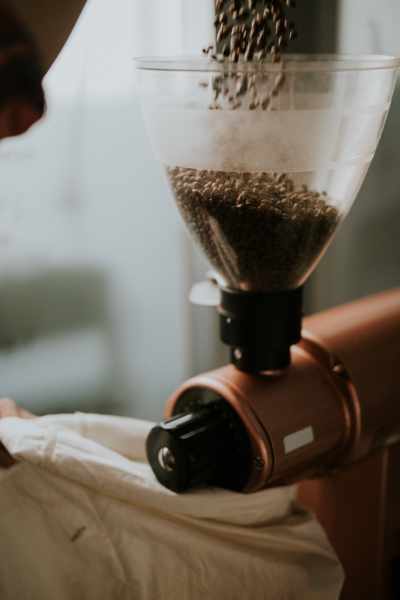
Similar to a pepper mill, a burr grinder will crush your coffee beans down to a certain size. When the bean bits are small enough, they will fall through the burrs. If you want a finer grind or coarser grind, you can adjust the burrs closer or further apart. Simples.
There are two main types of burr coffee grinders: there are conical burr grinders and flat burr grinders. Conical burr grinders are generally considered to be the better grinder; they give a more consistent grind, better size control, and produce less waste grounds, although they tend to be more expensive. A flat burr grinder can be a cheaper, middleground option; they are leagues better than a blade grinder and don’t break your bank.
The Perfect French Press Grind Size
Pre-ground coffee does speed up the process, but the downside is you can’t choose your grind size and your brew won’t be as fresh.
The grind size you use for a french press does depend on how long you plan to brew it for. Also, like most aspects in the world of coffee; while you can start out with facts and numbers, you will always end up doing some little tweaks just based on your preference.
For a typical French Press brew with 4 minutes of steeping, you’re going to want a coarse grind. A course grind has a consistency similar to sea salt. The ground coffee bits will have diameters of around 3.2 mm to 2.4 mm.
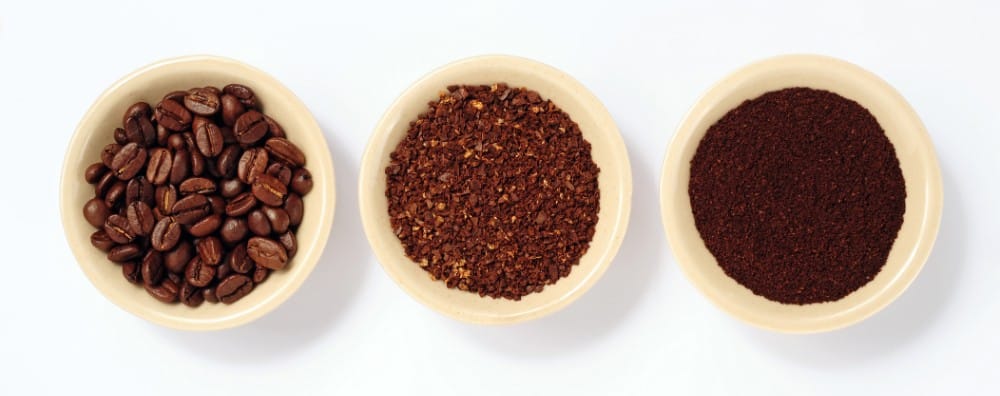
Coffee Grind Sizes for Other Coffee Brewing Methods
As with most coffee aspects, the best grind size for your brewing process will definitely need you to play around with it to find the best coffee result for your personal coffee tastes.
Use these descriptions and sizes as a starting point and then play around with slightly different grind sizes to your preference. Once you’ve just the right grind size, you’ll never want to change the grind setting.
Cold Brew Coffee
With cold brew, you want an extra coarse grind. The grounds will look like ground peppercorns with the crush coffee bean bits around 3.2mm in diameter.
Pour Overs, Drip Coffee Makers, and AeroPress (Including Chemex, Hario V60 and Similar Gadgets)

Most pour over methods and drip machines want a vaguely medium grind. If it uses a paper filter, a medium grind is a great start.
With the likes of a Chemex, the AeroPress, and other pour overs, you may want to play between going from a medium-coarse to a medium-fine grind.
A medium grind has a consistency similar to sand and has particles around 1.6mm in diameter.
A medium-fine grind with a consistency finer than sand and grounds between 1.6mm and 0.8mm in diameter.
A medium-coarse grind has a consistency similar to rocky sand with particles between 2.4 mm and 1.6 mm in diameter.
Espresso, Moka Pot, Percolator, and Siphon
As espresso machines and stovetop espresso makers don’t work the same way, they need slightly different grind sizes
Your espresso machine will want a fine grind. Stovetop pots such as Moka Pot and percolator pots, along with other coffee siphons will want either a fine or medium-fine grind.
Fine grounds have a consistency that is a bit finer than table salt. An espresso grind will be pretty tiny with particles around 0.4mm in diameter
Turkish Coffee
Turkish coffee, also known as Greek Coffee or Arabic Coffee, wants the absolute an extra fine grind. With this brew method, the beans should be absolutely decimated into powder.
A Word on Coffee Ratio
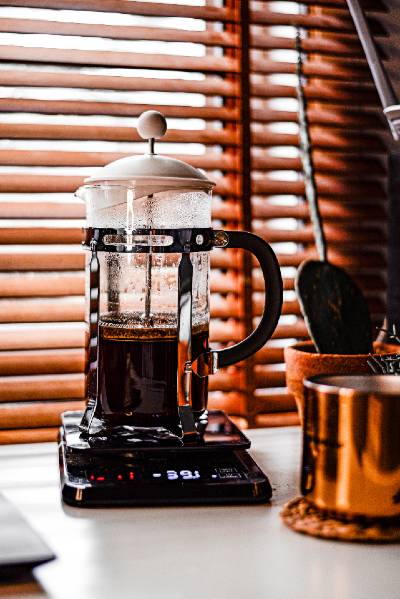
Your coffee ratio is the amount of coffee you use to the amount of water. It’s measured in grams and ml and your typical ratio is 1:15, 1 g of coffee per 15g of water. But the ratios people recommend are anything from 1:12 to 1:17, with 1:12 giving you a much stronger tasting coffee than a 1:17.
I stick with 1:15 as my true north, it generally makes a good cup of coffee with any beans but you can alter it to what you need. This does mean using a scale and working a bit harder for your coffee but that difference is undeniable, and the difference is repeatable which is what we want.
I talk more about French press brew ratio in this article.
A Word on Water Temperature
The SCAA say that the perfect water temperature to brew coffee is between 195F and 205F. That’s between 90C and 96C. The SCAA call this part of the “Golden Cup Standard”.
If it’s too hot, you’ll extract the harsher, more bitter, flavors. If it’s too cold, you won’t extract much flavor at all.
Although, you might find that brewing at a slightly lower temperature, like 85C (185F), might be more to your taste. It’s worth playing around with it.
Some French Press Coffee Brewing Methods
Ol’ Faithful, The 4 Minute Method
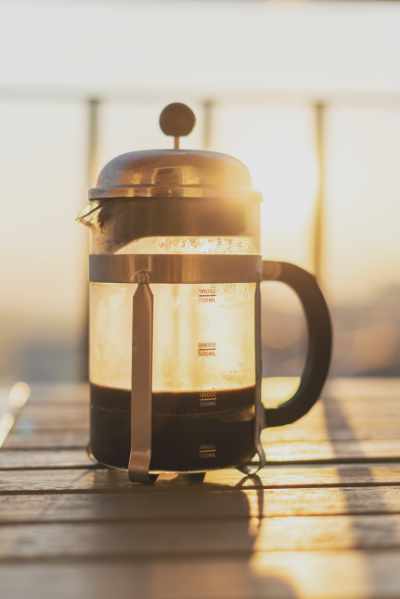
This is your bog standard method of making a French press coffee, it’s what I use every morning and it’s the best way to get yourself acquainted with French press coffee, how to use it, how to brew it, how it tastes.
Grind: Coarse
Brew Ratio: 1:15
Total Brew time: 4 minutes
To figure out how much coffee you’re going to need, open the calculator in your phone and account for 300ml per mug of coffee, then divide the amount of ml by 15 and you get how many grams of coffee you need.
Step 1. Boil the kettle, Weigh out your coffee and set the timer.
Step 2. Bring the kettle to the boil and allow to cool for a minute or two.
Step 3. Zero the scale, start the timer and pour the water in up the measure amount.
Step 4. Stir and put the lid on but don’t press down.
Step 5. Break the crust by stirring again after 4 minutes then leave for the final minute.
Step 6. Once timer sounds, plunge, pour, enjoy
This will make you close to a perfect cup every time, the only things you adjust are using less or more coffee to your taste. If you want to get a stronger flavor try a 1:14 ratio, and if you want a weaker coffee try a 1:16 ratio. It doesn’t seem like a huge difference but it will affect the taste more than you think.
A coarse grind allows for a slow and steady extraction of the coffee flavor from the ground beans.
Also make sure you’re allowing your kettle to cool before pouring, it won’t burn the coffee but it will extract faster so that it tastes more bitter after the 4 minutes.
If you’ve bought coffee for a French press this is the method you’ll want to follow.
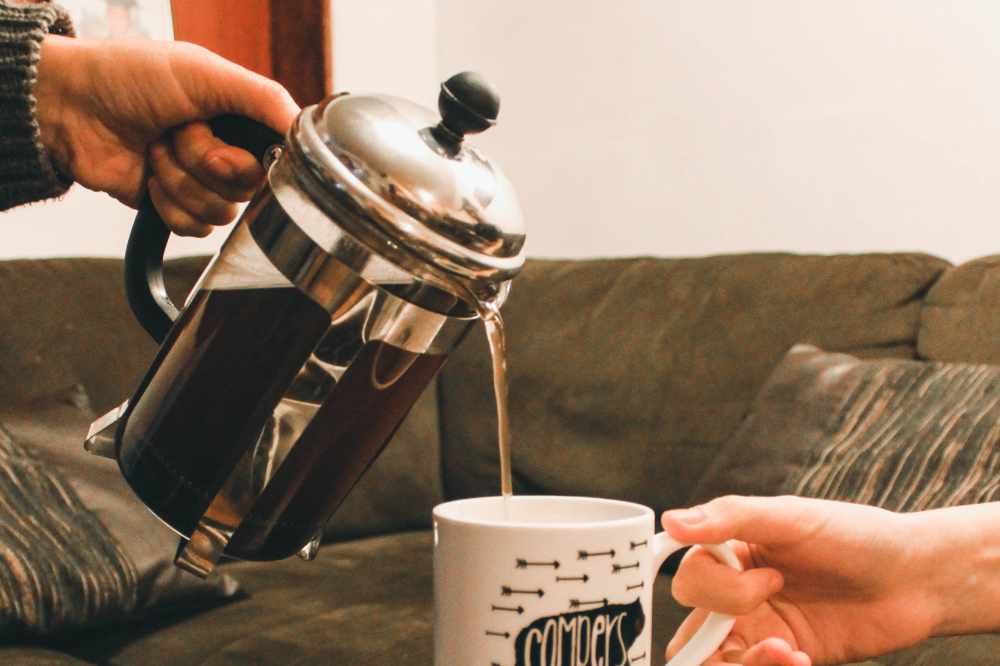
The Long Steep, The 8 Minute Method
This follows the same steps as the above method, the only difference is your brew ratio and grind size. The theory is by extracting slower from a coarser grind you’ll end up with a more balanced and delicate cup. That’s fancy coffee speak for it tastes better, definitely worth trying both and having an experiment yourself.
It’s coarser for an even slower and more gradual extraction of the flavors.
It calls for the coarsest setting your grinder can handle while still being an even grind, if you open it up and there’s half a coffee bean sitting in the grinds you’ve gone too far, a notch finer and try again.
Grind: Extra Coarse
Brew Ratio:
Brewing Time: 8 minutes
The only difference is you’re going to have a second stir after 7 minutes instead of 4 minutes, leaving that last minute to settle the grounds before you press the plunger down.
Feeling Fancy and Silt Free, The James Hoffman method

This is the longest and most laborious method but it arguably produces the best cup of coffee, and a french press coffee with no sediment in the cup, no bits at the bottom, just a true barista esq coffee that’s smooth and balanced.
Grind size: Medium
Ratio: 1:16
Brew time: 9 minutes +
Step 1. Boil the kettle, Weigh out your coffee and set the timer.
Step 2. Bring the kettle to the boil and allow to cool for a minute or two.
Step 3. Zero the scale, start the timer and pour the water in up the measure amount.
Step 4. Stir, put the lid on but don’t press down, and leave it for 4 minutes.
Step 5. Stir the crust from the top through the coffee and then with two tablespoons you’re going to scoop the foam off the top of the water
Step 6. Leave it for 5 minutes at least, preferably 8 minutes to allow the bits of coffee to settle at the bottom.
Step 7. Place the plunger on the surface of the coffee but don’t press it down! That disturbs all the coffee at the bottom, you just want to use it as a filter to catch any stray floaters.
Step 8. Pour out and enjoy.
Like I said, it’s not the easiest method and much more active than a set and forget French press tends to be but it does make a delicious cup of coffee.
I’m not actually sure why this works as a medium grind rather than a coarse grind, but I’m not going to argue with a barista world champion!
What grind Size Is Best For French Press Cold Brew?
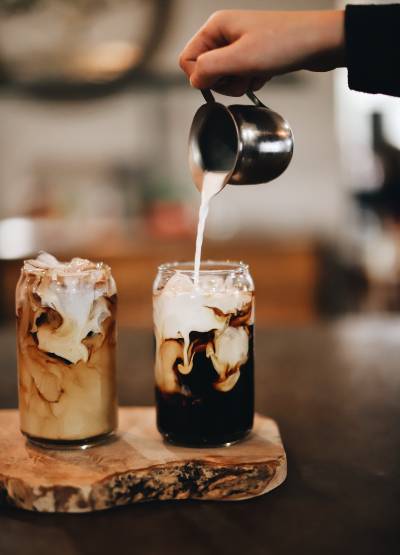
As Scott told us in his guide to Cold Brew you want cold brew grind to be about as coarse as you can possibly get it, it should look like peppercorns when you add the water. This gets combined with a brew ratio of 1:7 and you’re good to go.
Again there are a ton of different ways to make it but that’s what we recommend.
F.A.Qs
Can I use fine grind in French press?
Ultimately you can use any grind you want but it won’t make you as good a cup of coffee. Fine grind is for espresso type coffees, it’s too fine and gets over extracted in a french press and can even leak through the filter. If you want to try it I’d probably recommend a 3 minute brew time but don’t hold out, it’s just the wrong grind so it won’t be the best.
Why does French press need coarse grind?
It needs a coarse grind because the water is in contact with the beans for so long, if it’s too fine too much flavor gets extracted and it gets muddied and bitter. But if you reduce the time then it tends not to be long enough to get a well balanced flavor out because some flavors extract quicker than others.
Whereas espresso which does use a fine grind the water isn’t long in contact with the coffee so you need a finer grind to maximize flavor.
What does a French press grind look like?
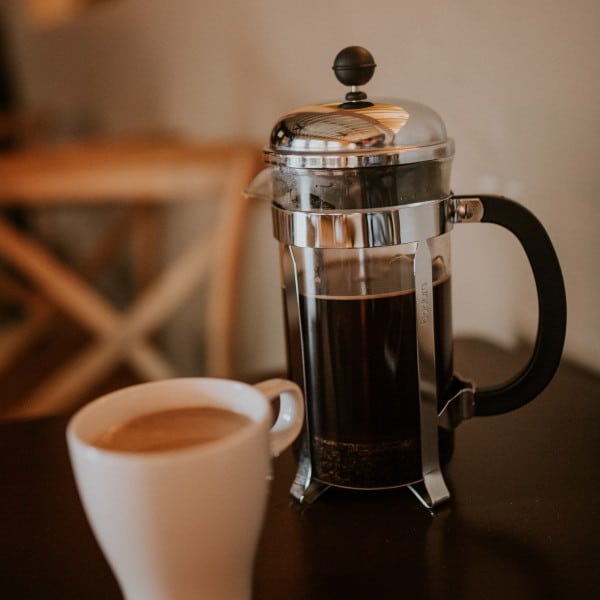
Slightly smaller than peppercorns, if you imagine a peppercorn has been cut in half you’re looking at about the right grind for a french press.
Should you Stir French press?
You absolutely should, if you don’t stir all the grounds won’t get soaked and so you’ll miss out on a lot of the flavor and your cup will taste weak and watery.
Can you use regular ground coffee in a French press?
If you’ve bought misc ground coffee that doesn’t specify then I’d use it in a french press. And I’d start with the standard 5-minute method and adjust accordingly to how it tastes. If it’s too strong then use less coffee and if it’s too weak try more coffee.
And if neither of those work, try to adjust brew time.
It’s a pain but that’s one of the reasons you should stick to grinding your own coffee.
Final Thoughts
I hope that was useful, I know it’s never a straight answer but I hope you try out the 3 methods of french press coffee and find one you like. Always feel free to experiment too, if you make a bad cup for yourself who cares, you can just make yourself a fresh one.
Related Reading
How to Use a French Press to Make Coffee (and How Not To)
Best French Press Travel Mugs (It’s Easy To Have Great Coffee On The Go)
How Much Coffee Per Cup In A French Press – Brew Ratio Explained


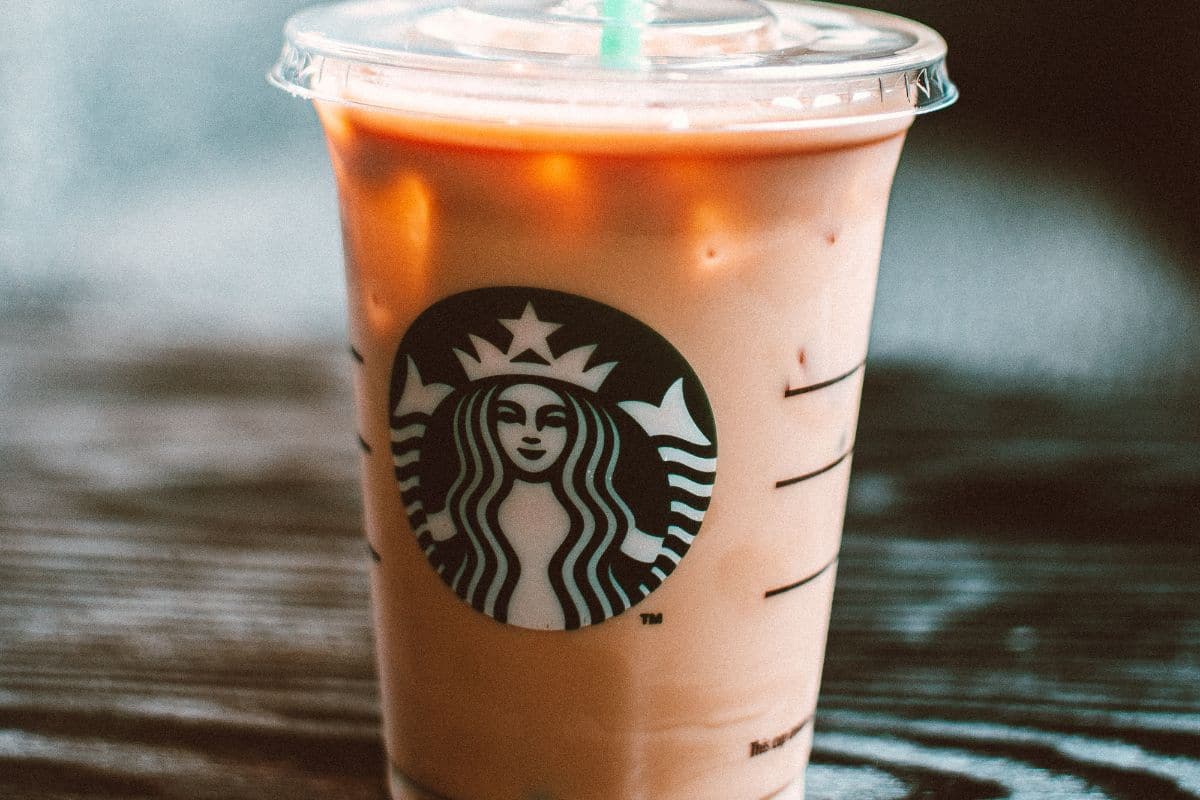
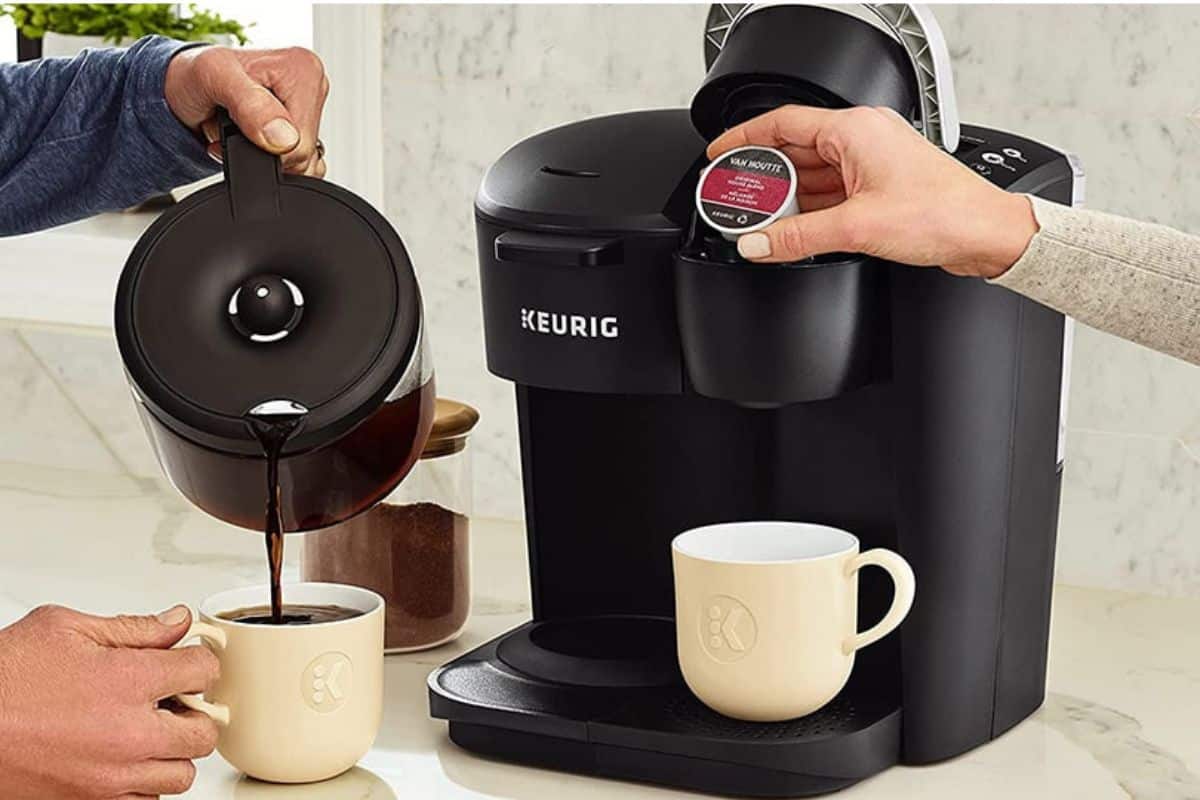

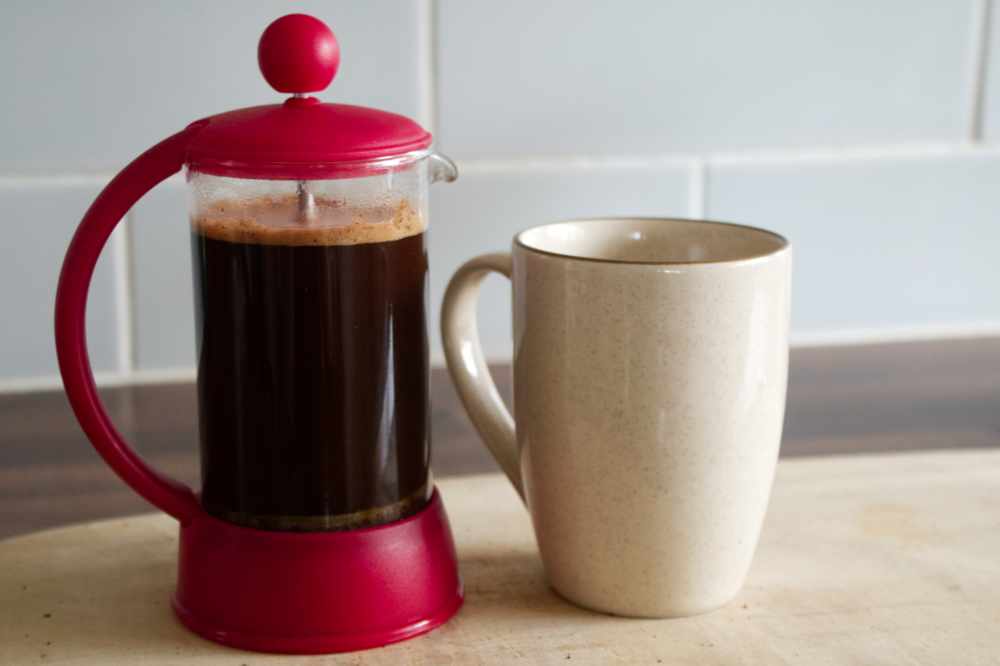
Thank you, I have just been looking for information about this subject for ages and yours is the best I’ve came upon till now. However, what concerning the bottom line? Are you sure concerning the source?